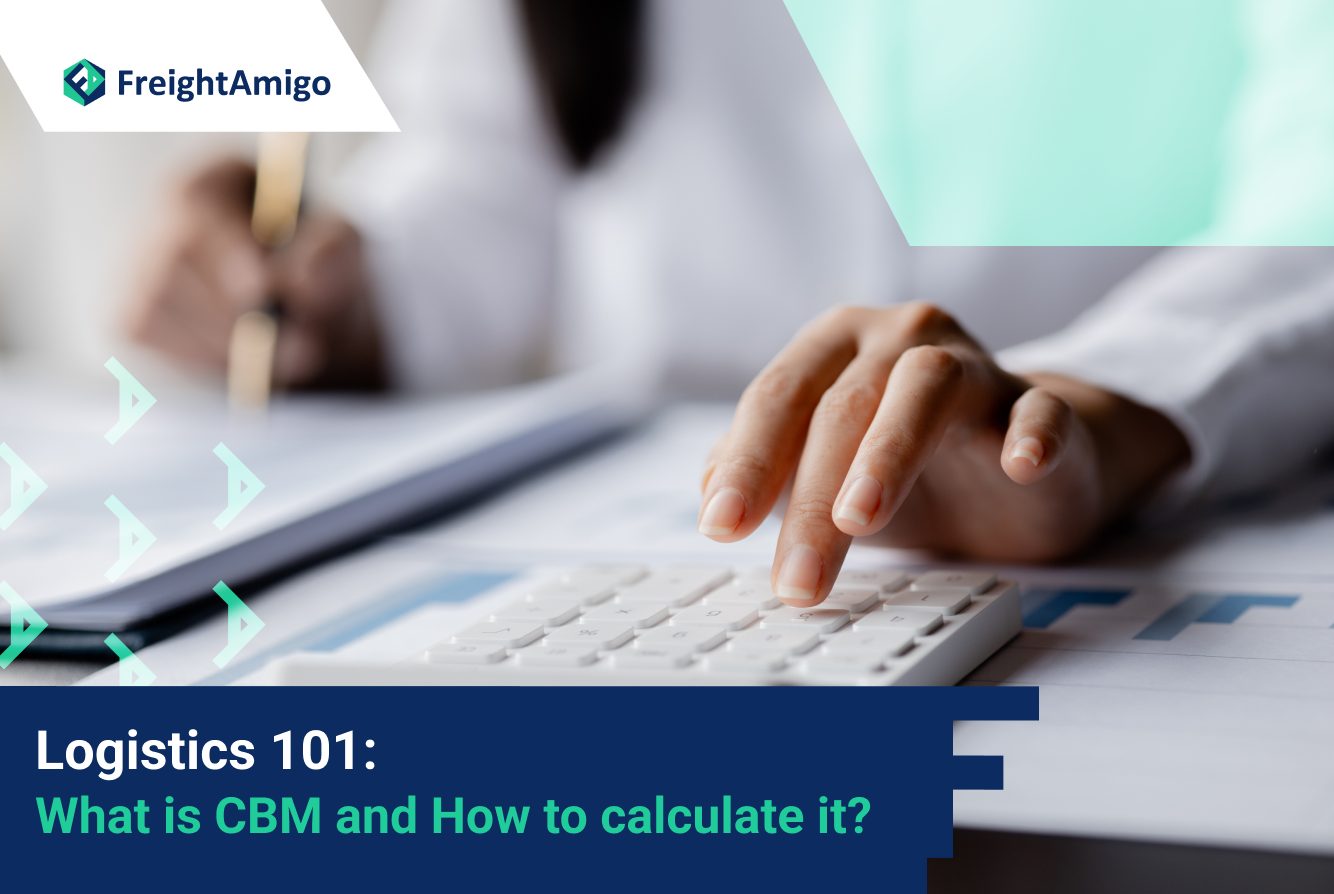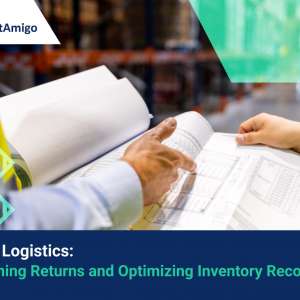What is CBM and How to calculate it?
Author Name: Tiffany Lee – Marketing Analyst at FreightAmigo
Want To Compare The Best Express, Air Freight, Sea Freight, Rail Freight & Trucking Rates So As To Have Better Control On Cost?
What is CBM?
CBM (Cubic Meter) is a standard unit used in domestic and international shipping to measure how much space a shipment takes up in a container, airplane, or truck. It represents the shipment’s volume, which directly influences how freight companies calculate transportation costs.
In logistics, space is just as valuable as weight—sometimes even more so. That’s why CBM is a key factor in determining the chargeable weight of cargo. Generally, the larger the CBM, the higher the shipping cost, especially in air and ocean freight where space is limited and pricing is heavily volume-based.
The Importance of CBM in Shipping
CBM plays a vital role in determining how much you pay for shipping, especially in Less than Container Load (LCL) shipments. In both domestic and international freight, carriers typically use two key weight metrics to calculate charges:
- Actual (Gross) Weight
- Volumetric (Dimensional) Weight, which is calculated based on the shipment’s CBM
Whichever of these two is greater becomes the chargeable weight.
This pricing method is especially important in LCL ocean freight, where multiple shipments share the same container. Since LCL rates are based on how much space your cargo occupies, CBM becomes the benchmark for cost estimation. The higher the CBM, the higher the likely charge—even if the shipment is relatively lightweight.
For example, imagine shipping a large stack of empty plastic bins. While they’re not heavy, they occupy a lot of space. A smaller, denser shipment like steel rods might weigh more but take up less room. In this case, the bins would cost more to ship due to their volume—despite being lighter—because they consume more container space.
Even in the U.S. trucking industry, particularly for LTL (Less Than Truckload) freight, CBM influences freight class—which directly impacts pricing, especially for bulky or irregularly shaped cargo.
Moreover, understanding your CBM helps you choose the right type of transport. Since ocean freight moves through large commercial vessels and often involves intermodal transfers, knowing your cargo’s CBM can help your forwarder determine whether you need a standard trailer, flatbed truck, or container chassis at different points of the journey.
In short, CBM isn’t just a calculation—it’s a planning tool that gives you insight into cost, logistics, and space efficiency across the entire shipping journey.
CBM and Container Capacity
Knowing the CBM of your shipment is essential for estimating how many products can fit in a shipping container. However, calculating this is not as simple as comparing the total shipment volume to the container’s maximum capacity. Containers cannot utilize every piece of space in every loading scenario, resulting in some unused space. The amount of unused space depends on factors such as the size and shape of the items being loaded, their packaging, and how they are stowed. As a general rule, the actual capacity within a container is typically a little over 80% of its maximum capacity.
To provide a general estimate of how many products fit in common shipping containers, refer to the table below:
| Container Type | Length | Width | Height | Capacity | Maximum |
| 20′ | 589 cm | 234 cm | 238 cm | 26-28 CBM | 33 CBM |
| 40′ | 1200 cm | 234 cm | 238 cm | 56-58 CBM | 66 CBM |
| 40′ HC | 1200 cm | 234 cm | 269 cm | 60-68 CBM | 72 CBM |
| 45′ HC | 1251 cm | 245 cm | 269 cm | 72-78 CBM | 86 CBM |
Please note that these estimates provide a rough idea and do not account for variations in packing methods or specific container configurations. It is always recommended to consult with your shipping carrier or freight forwarder for more accurate information.
How to Calculate CBM for Shipment
To calculate CBM, start with the basic formula:
CBM = Length (m) × Width (m) × Height (m)
Square or Rectangular Package formula will follow the basic formular, simply plug the item’s measurements into this formula to get its volume:
CBM = Length (m) × Width (m) × Height (m)
Cylindrical Package formula, such as a roll of fabric or a drum—you’ll first need to find the radius (half the diameter). Then use this equation:
CBM = 3.14 × Height (m) × Radius²
- Radius is half the diameter
Irregular-Shaped Package formula:
CBM = Longest Length × Longest Width × Longest Height
- Use the maximum dimensions in each direction to estimate volume like a rectangular box
The calculation gives you a practical estimate of the space your item will occupy during shipping.
CBM Conversion for Ocean Freight
When it comes to ocean freight pricing, one ton (1000 kg) is considered equivalent to 1 CBM. This simplifies the calculation of CBM for LCL (Less Than Container Load) shipments. Here is a handy chart converting kg to CBM for ocean freight:
- 1 kg = 0.001 CBM
- 10 kg = 0.01 CBM
- 50 kg = 0.05 CBM
- 100 kg = 0.1 CBM
- 200 kg = 0.2 CBM
- 500 kg = 0.5 CBM
- 1000 kg = 1 CBM
These conversions help determine the space required for your cargo and enable accurate pricing calculations for ocean freight shipments.
What’s the Difference Between Volumetric Weight and Chargeable Weight?
When shipping goods—especially via air or express courier—understanding the difference between gross weight, volumetric weight, and chargeable weight is key to avoiding surprises in freight costs.
Gross Weight
Gross weight refers to the actual weight of the cargo, including packaging and pallets. It’s measured using a scale.
Volumetric Weight
Volumetric weight (also called dimensional weight) is a calculation that reflects how much space a shipment takes up, based on its volume. It’s used when a shipment is large but lightweight. Formula: Volumetric Weight = CBM × DIM Factor.
Example: A large box with 0.4 CBM and a DIM factor of 167 results in a volumetric weight of 66.8 kg.
DIM Factor
The DIM Factor (Dimensional Factor) is a constant that varies by carrier and transport mode. It defines the volume-to-weight ratio used in pricing. Lower DIM factors lead to higher volumetric weights.
Example: For international air freight, the DIM factor is often 167; some couriers may use 200 or 250 depending on service level.
Chargeable Weight
Chargeable weight is the number that freight carriers use to price your shipment. It’s determined by comparing gross weight and volumetric weight—and choosing the greater of the two.
Example: If gross weight = 48 kg and volumetric weight = 66.8 kg, the chargeable weight will be 66.8 kg.
CBM Conversion for Air Cargo
Calculating CBM for air cargo differs from the calculation used for ocean freight. The standard formula for air cargo is length (cm) x width (cm) x height (cm) ÷ 6000 = volumetric weight (KG). This conversion allows carriers to determine the chargeable weight based on the volume of the shipment. For quick reference, remember that approximately 167 kg is equivalent to 1 CBM for air freight.
Calculate your shipment’s cubic meter volume with free CBM calculator
FreightAmigo offers a free automated CBM (Cubic Meter) calculator to simplify your shipping calculations. With the automated CBM calculator in the Instant Quote function, you only need to enter some basic information of the cargo, and you can easily determine the volume of the cargo (in cubic meters), which is crucial for accurate pricing and planning. Whether you are shipping by air, ocean, or land, the CBM calculator provided by FreightAmigo allows you to quickly and accurately calculate the space your shipment will occupy. Take advantage of this user-friendly tool to streamline your shipping process and make informed decisions about your freight.
Conclusion
Understanding CBM is more than just a numbers game—it’s a critical step in planning efficient, cost-effective shipping. Whether you’re comparing air and ocean freight, calculating container loads, or estimating chargeable weight, CBM gives you visibility into how your cargo translates to space and cost. By accurately measuring your shipment and using tools like FreightAmigo’s CBM calculator, you can avoid surprises, optimize your logistics strategy, and ensure smooth international transport. For businesses big or small, mastering CBM is one of the smartest moves you can make in global trade.
If You Wish To Learn More About Ocean Freight Rates, Please Go To The FreightAmigo Page For Inquiries
===
If you have any inquiries on logistics/supply chain, feel free to contact FreightAmigo now:
Chat with us online OR
Phone : +852 28121686
WhatsApp: +852 27467829
[/vc_column_text]









































